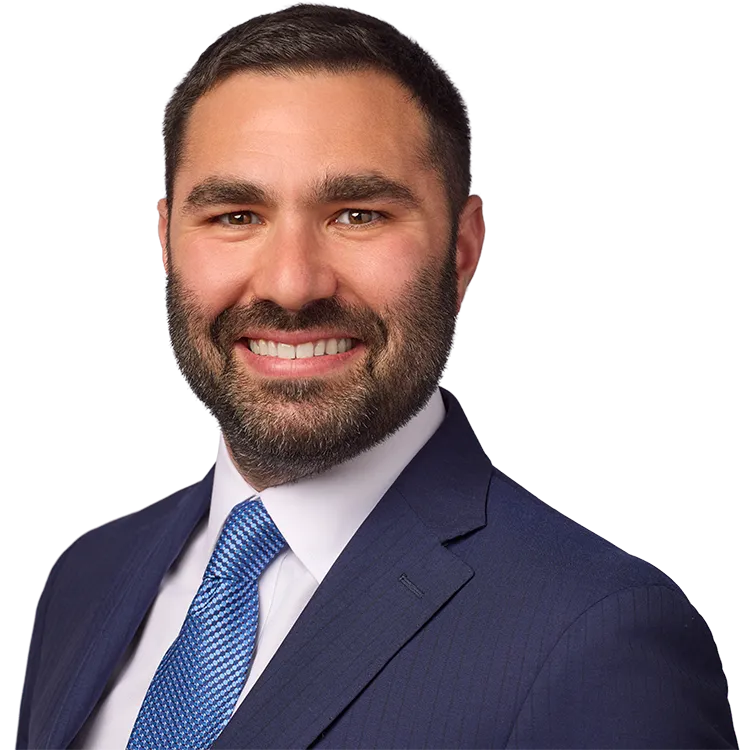Buses move millions of people across New York City every day. Whether it’s an MTA route through Manhattan, a school bus in Queens, or a tour bus near Times Square, these large vehicles are part of daily life.
But when a bus crashes, the results can be devastating. Passengers, pedestrians, cyclists, and drivers in smaller vehicles are all at risk. If you’ve been hurt in one of these crashes, a New York City bus accident lawyer can help you figure out what to do next.
Why Choose The Perecman Firm, PLLC as Your New York City Bus Accident Lawyer?

Bus accident cases are not the same as other vehicle claims. They often involve public agencies, government timelines, and complicated liability questions. The Perecman Firm, PLLC, has handled many of the city’s toughest transportation injury cases, and it brings that experience to every client it serves.
Here’s what makes them a strong choice:
- Decades of experience with MTA, NYCTA, and school transportation cases
- Deep knowledge of New York’s transportation and municipal laws
- Clear communication and full transparency throughout your case
- Investigative resources to uncover surveillance, maintenance, and operator records
- Strong trial history when agencies or insurers refuse to settle fairly
- Personalized legal strategy focused on your recovery and long-term needs
What Types of Bus Accidents Happen in New York City?

Bus-related accidents come in many forms in a city as dense and busy as New York. Each presents unique challenges depending on where, how, and why it occurred.
Bus and pedestrian collisions
Crosswalks in Midtown, Lower Manhattan, and the Bronx are often crowded. Pedestrians can be struck by turning buses that fail to yield. These crashes often lead to broken bones, internal injuries, or traumatic brain injuries.
In many cases, the driver may not even stop unless a witness calls it in.
Injuries to passengers on the bus
Passengers can be thrown from their seats or knocked down while standing. Sudden braking, sharp turns, or crashes with other vehicles often lead to sprains, fractures, or head injuries.
Unlike in private cars, most buses don’t have seatbelts, increasing the risk of movement during collisions.
Bicycle and motorcycle crashes
Cyclists and motorcyclists share lanes with large buses, especially on narrow avenues. Even a small bump from a turning bus can throw a rider into traffic or onto the pavement. These types of crashes are often serious and sometimes fatal.
Private and charter bus incidents
Tour buses, church vans, and long-distance coaches often carry dozens of passengers through the city. These vehicles may be operated by private companies with different safety rules and maintenance standards. Victims may need to file against corporate insurance policies instead of public agencies.
School bus accidents
When school buses crash, the victims may include children, school staff, and other drivers. These cases involve strict reporting requirements and often trigger local or state-level investigations. Parents need support and guidance from the very start.
What Causes Bus Crashes In New York City?

There are many reasons why buses crash in the city, but most involve negligence or carelessness that could have been avoided.
Driver fatigue or distraction
Long shifts and tight schedules cause drivers to lose focus. Using a phone, looking at GPS, or rushing between stops increases the risk of missing hazards on the road.
Inadequate training or supervision
Bus operators must be trained on city routes, traffic patterns, and vehicle operation. When agencies or companies skip steps in hiring or fail to monitor conduct, they may be responsible for the accident.
Mechanical failure or poor maintenance
Worn-out brakes, bad tires, and broken steering systems all contribute to crashes. Public and private bus operators must maintain their vehicles and fix problems before sending them back out.
Poor visibility and blind spots
Buses have wide blind zones, especially on the sides and rear. If mirrors are not adjusted or drivers don’t check them properly before merging or turning, they can strike vehicles, pedestrians, or cyclists.
Dangerous intersections and crowded routes
Some parts of NYC are more prone to bus accidents. Places like Flatbush Avenue, Grand Concourse, and 125th Street in Harlem see frequent congestion, rushed driving, and poor visibility. Local geography often plays a part.
What Should You Do in the Weeks After a Bus Accident?

The first few days after a bus crash are a blur. But it’s the weeks that follow that often matter most to your case.
Here’s what to focus on while you recover.
Get continued medical care
If you were treated at the scene, follow up with your doctor. Many serious injuries, like concussions or internal bleeding, don’t show symptoms right away. Seeing specialists also creates a medical record that can support your legal claim.
Save everything you receive
Collect receipts, medical summaries, insurance paperwork, bus schedules, and witness contact information. If you were on the bus, remember which route, time, and intersection the accident happened at. These details can support a later investigation.
Be cautious when speaking to insurers
Representatives from a city agency or insurance company may contact you. They may seem polite, but they aim to settle quickly and for as little money as possible. You do not have to answer questions or give a statement without a lawyer present.
Talk to a law firm with bus accident experience
Bus cases in NYC are subject to strict filing deadlines, especially if a public agency like the MTA is involved. These claims often require a “Notice of Claim” to be filed within 90 days. Reaching out to a lawyer early helps you avoid missing your window.
What Compensation is Available in a New York City Bus Accident Case?

When a bus crash disrupts your life, the law allows you to recover compensation for your losses. This can include both immediate and long-term effects.
Medical expenses
You may be compensated for ambulance rides, emergency care, surgeries, therapy, prescriptions, and follow-up visits. Long-term treatment, mobility aids, or home health services can also be included.
Lost income and future earnings
If the accident forced you to miss work or prevented you from returning to your job, you may be entitled to lost wages. If your injury affects your ability to earn in the future, those projected losses may be added to your claim.
Pain and suffering
These damages reflect the physical pain and emotional stress you’ve gone through. Long-term trauma, loss of enjoyment in life, and daily discomfort are often part of the claim.
Disfigurement and disability
Bus accidents can cause burns, amputations, or permanent injuries. These damages recognize the personal, professional, and social challenges that follow.
Wrongful death
If a loved one died in a bus accident, surviving family members may recover funeral costs, lost household income, and the emotional burden of losing someone too soon.
Fast Wheels, Slow Justice: Why NYC Bus Cases Are Different

New York City has more layers of transit agencies, private operators, and legal red tape than anywhere else. When someone is hurt in a crash involving a city-owned bus, the legal process is different than a typical car accident.
You can’t simply file a lawsuit the next day. Many buses are operated by the Metropolitan Transportation Authority (MTA) or the New York City Transit Authority (NYCTA). These are public agencies, meaning you must file a Notice of Claim within 90 days of the accident. If you miss that window, you may be unable to recover anything.
Large corporations based outside New York may insure tour buses and private coaches. Getting in touch with the right insurer or policyholder can take time. A lawyer understanding how to cut through these delays can help speed up your case and get answers faster.
There are also video cameras on most MTA buses, which can be requested in an investigation, but they are often erased within days unless someone takes steps to preserve them. Local legal teams with connections in NYC know how to lock that evidence down before it’s gone.
Why Is It Hard to Handle a Bus Accident Claim Alone?
The Insurance Company Doesn’t Work for You

When you’ve been hurt, it may feel like help is coming. But the insurance company, whether it’s private or from a public agency, isn’t there to protect you. They’re protecting their own bottom line. Every dollar they pay you is a loss on their books.
How they minimize your claim
Insurance adjusters often question whether your injuries are serious. They may suggest you’re exaggerating or that the accident wasn’t the real cause. They might delay processing your claim until you give up or accept less. In some cases, they offer fast settlements that don’t come close to covering long-term needs.
What you miss without legal help
Without a lawyer, you may miss deadlines, accept too little, or fail to identify all the responsible parties. Bus crashes often involve multiple people or agencies and holding them all accountable takes time and knowledge. Many victims don’t realize they’re entitled to more than basic no-fault benefits.
Can I File a Claim If I Didn’t Take an Ambulance from the Scene?

Not every bus accident leads to an emergency room visit right away. Some people feel shaken but walk away. Others wait to see if the pain goes away. You can still file a claim if you didn’t take an ambulance from the scene.
Your legal rights don’t depend on whether you rode in an ambulance, but on whether you were injured and someone else was responsible.
Delayed symptoms are common
Neck and back injuries often get worse in the hours or days after the crash. Swelling, stiffness, or nerve pain may not show up until you’ve gone home. Many riders don’t want to make a fuss in public or may have been embarrassed then. That doesn’t make your injuries less real or less valid.
Medical treatment matters more than how you got there
The law doesn’t require you to leave in an ambulance to have a strong injury case. What matters is that you saw a doctor, followed up on symptoms, and kept records. If you went to urgent care later, saw your primary doctor, or visited a specialist, those medical visits can all support your claim.
Insurance companies will try to use it against you
It’s common for adjusters to argue that if you didn’t take an ambulance, you must not have been seriously hurt. This is not only unfair—it’s misleading. Many people try to tough it out or simply don’t want to deal with the cost of emergency care. A bus accident lawyer can push back against those arguments with clear medical evidence.
You still have the right to hold them accountable
If a bus operator’s actions caused your injury, you deserve to be heard, regardless of how long it took you to get help. A law firm that knows how NYC transit agencies and insurance carriers work can build a strong case, even without an ambulance record.
How The Perecman Firm, PLLC stands up for you
This firm knows how NYC transit systems work—and how their insurance carriers try to escape liability. Their team gathers medical evidence, speaks to witnesses, and demands surveillance footage before it disappears.
They deal with adjusters, so you don’t have to. And if a fair settlement isn’t offered, they confidently prepare your case for court.
One Last Stop: Let’s Get You Moving Again

You didn’t expect your day to end in a crash. But now, it’s time to protect your future. Call The Perecman Firm, PLLC at (212) 977-7033 to speak with a New York City personal injury lawyer who will fight for everything you’re owed.
The road ahead feels hard—but with the right team, you won’t walk it alone.